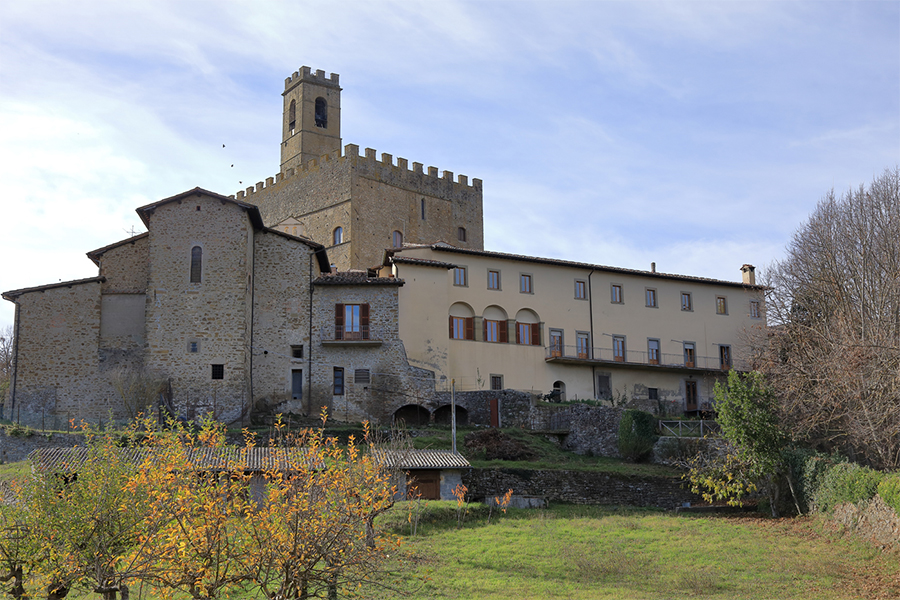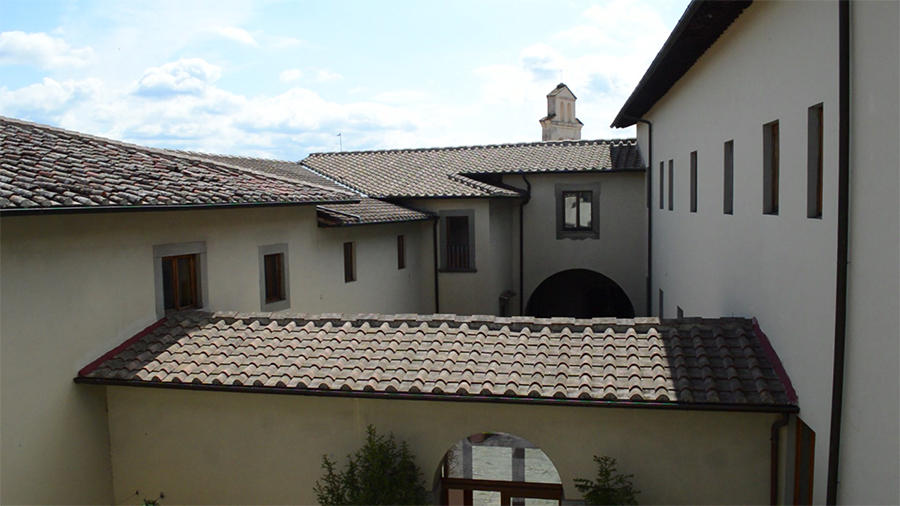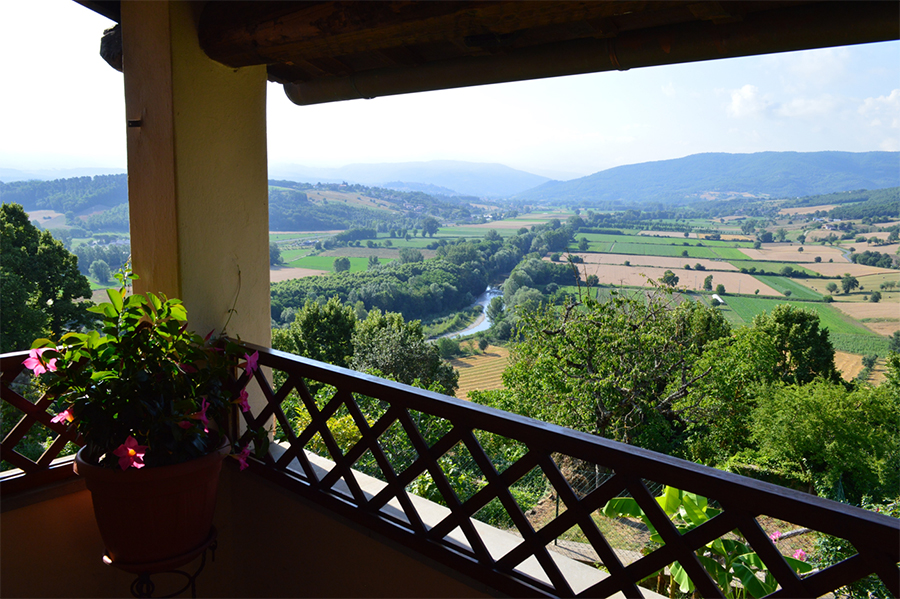 The monastery, built between 1563 and 1565, is named after the Most Holy Trinity and originally hosted a community of Augustinian nuns. In 1911, when the Augustinian nuns remained a small nucleus of three religious sisters, some Camaldolese nuns from the monastery of Arezzo were sent there. The construction of the monastery was financed by Dianora Paolozzi, noblewoman of Poppi, who decided to donate her substances for the monastery. The monastery stood in the suburb of Tiggiano, a small and poor neighbourhood, where potters lived and worked. Close to the monastery a door opened into Tiggiano, but then it was walled up so as to facilitate the seclusion of the nuns. This place was considered excellent for hosting a monastic community. Near the neighbourhood, in fact, there was a small church, a place protected by the Compagnia di S. Bastiano from 1560 on, later by the Compagnia della Misericordia. At that time the suburb in which the monastery was built was detached from the rest of the village, and the territory included the Tiggiano and the Benvegnate areas.
The monastery, built between 1563 and 1565, is named after the Most Holy Trinity and originally hosted a community of Augustinian nuns. In 1911, when the Augustinian nuns remained a small nucleus of three religious sisters, some Camaldolese nuns from the monastery of Arezzo were sent there. The construction of the monastery was financed by Dianora Paolozzi, noblewoman of Poppi, who decided to donate her substances for the monastery. The monastery stood in the suburb of Tiggiano, a small and poor neighbourhood, where potters lived and worked. Close to the monastery a door opened into Tiggiano, but then it was walled up so as to facilitate the seclusion of the nuns. This place was considered excellent for hosting a monastic community. Near the neighbourhood, in fact, there was a small church, a place protected by the Compagnia di S. Bastiano from 1560 on, later by the Compagnia della Misericordia. At that time the suburb in which the monastery was built was detached from the rest of the village, and the territory included the Tiggiano and the Benvegnate areas.At present numerous remakes are visible both in the monastery and in the church; however the traces of history and the presence of valuable works remain. Madonna Dianora decided to commit herself to building the monastery and praying to the Most Holy Annunziata. This was the title of the church and the coat of arms of the monastery is the lily (today visible on the entrance portal), message of fecundity, purity and royalty that the angel announces to Mary.



